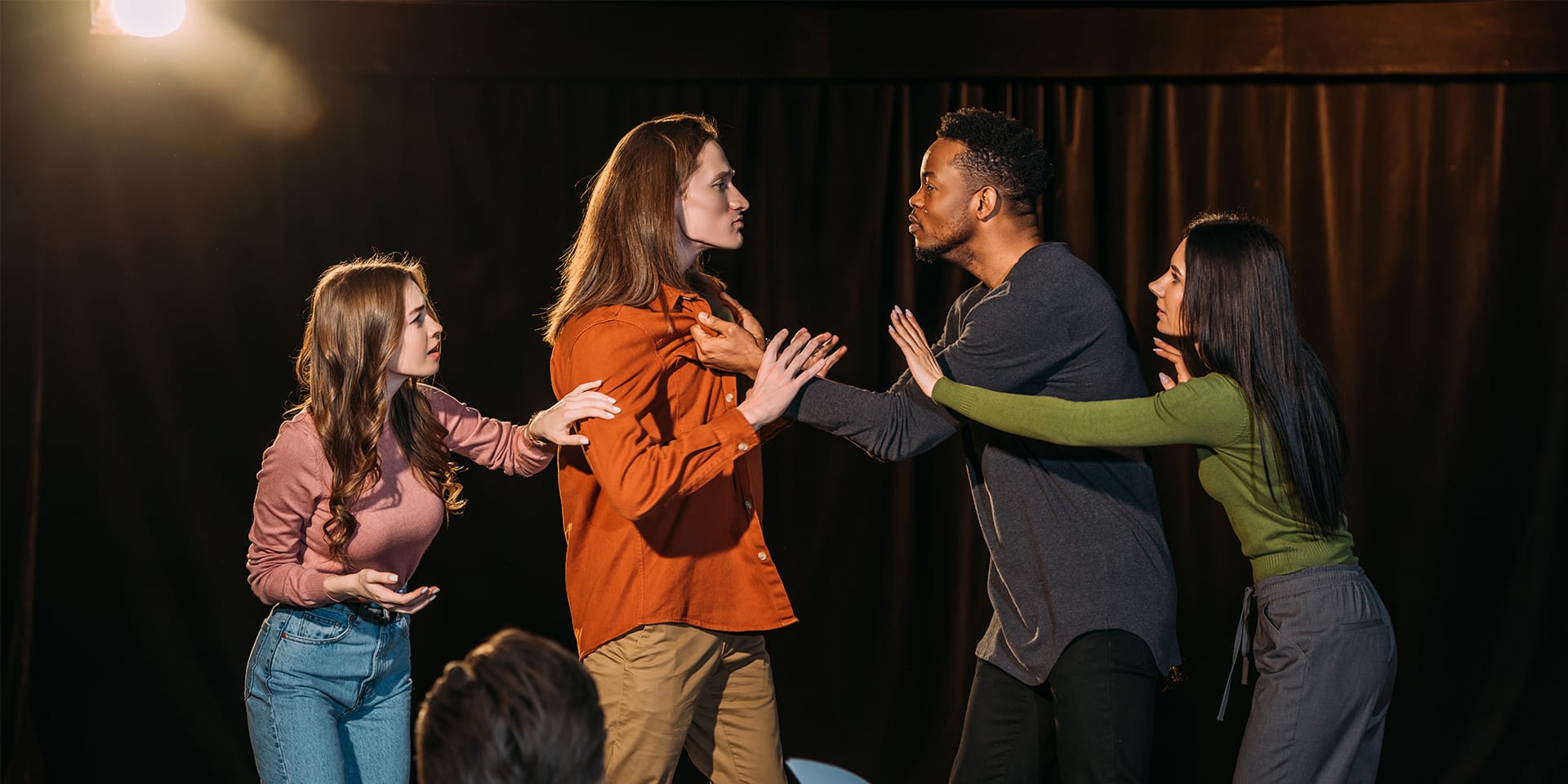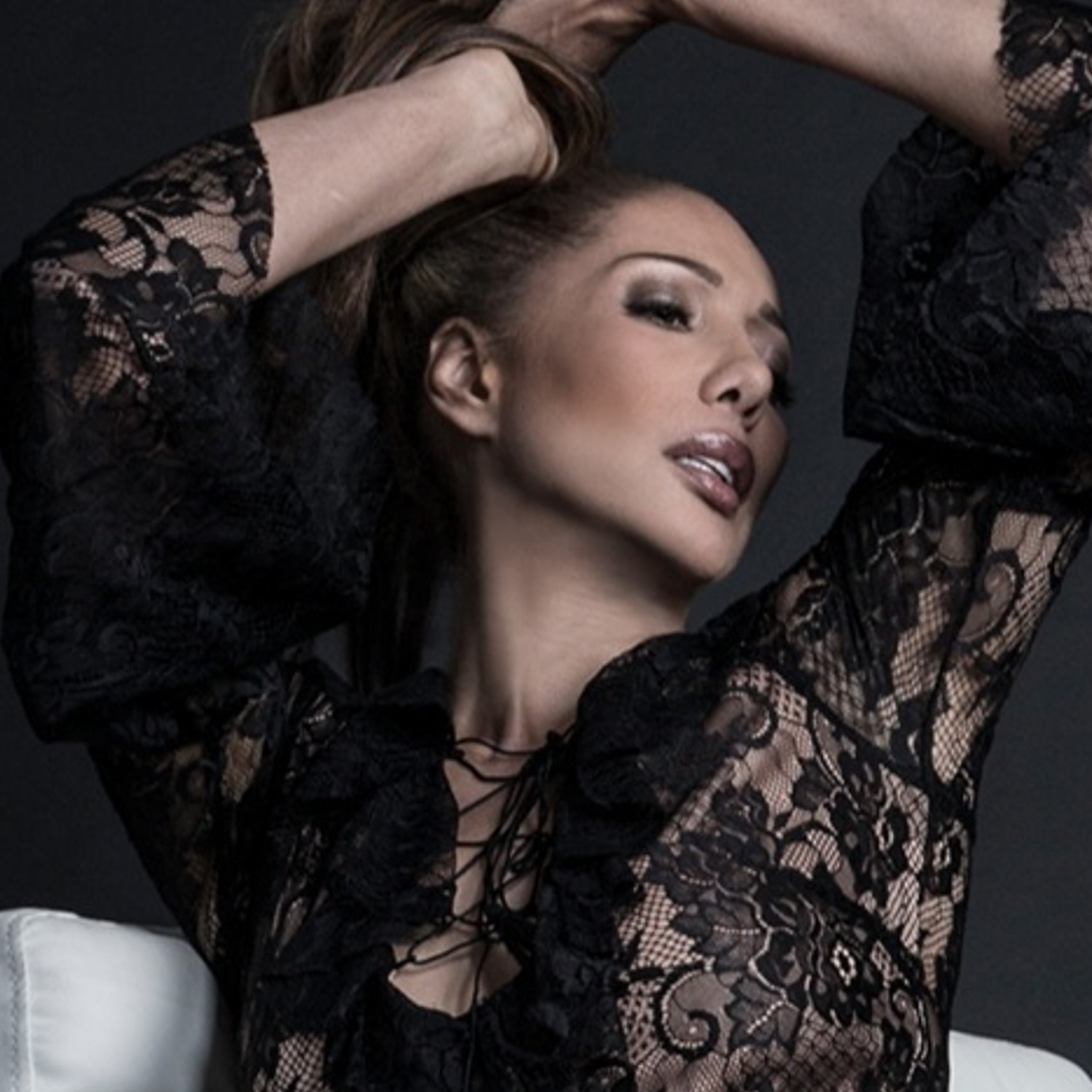–
***
Stage to Studio: How Acting Training
Transforms Voice Work
–

–
By Joan Baker, September 1, 2024
–
Dedicated teachers have always been crucial in shaping my understanding of acting and voice acting, bridging the gap between raw talent and professional skill. I had the privilege of studying with the late Uta Hagen at HB Studios in New York, and later earned a work-scholarship at The Actors Studio. There, I observed the craft firsthand with legends like Estelle Parsons, Harvey Keitel, Al Pacino, Ellen Burstyn, and Arthur Penn. I also had the honor of studying extensively with the remarkable Wynn Handman, the father of off-Broadway.
–
These experiences have been invaluable to my voice acting career and my role as a teacher. Teaching others, in turn, allows me to explore the craft at an even deeper level. As a voice actor, you’ll find yourself in a booth with just a script, a microphone, and perhaps a director. Unlike on-camera work, you don’t interact with other actors or environments, which can make it challenging to fully realize your character. This is where traditional acting techniques can truly shine.
–
In my years of being a performer and teacher in voice acting, I know how incorporating these techniques can enhance and deepen performances. They help voice actors move beyond the limitations of the booth, allowing them to bring a deeper, more authentic expression to their performances. This is more important than ever, now that the “conversational read” an unspoken staple of traditional acting, has finally reached the voice acting community, and is the go-to request for most auditions and performances. For this essay, I wish to simply illuminate some of traditional acting techniques that can completely reimagine the work of voice actor.
–
Let’s talk about a few techniques that, when incorporated into your voice acting practice, can elevate your craft to a new level.
–
Sense Memory: Bringing Authenticity to Your Voice
–
Sense memory, a technique rooted in the teachings of Konstantin Stanislavsky, is about recalling sensory experiences from your past and using them to inform your performance. For example, if your character is supposed to be standing in a freezing cold environment, you might remember a time when you were chilled to the bone. How did your body react? How did your voice change? Even though you’re in a comfortable studio, you can use those memories to infuse your voice with the authenticity of that experience.
–
Stanislavsky once said, “You can kill a character by making him mechanical. If you love what you are doing, it will never be mechanical.” Sense memory helps prevent your performance from sounding flat or mechanical by grounding it in real, lived experiences, making your character more believable to the audience.
–
In my experience as a voice acting coach, I’ve found that when actors engage with sense memory, their performances become more nuanced and layered. They move beyond simply reading lines to truly feeling the character’s world, which resonates deeply with audiences.
–
The Moment Before: Setting the Stage for Your Performance
Another technique that can transform your voice acting is “the moment before.” This concept, emphasized by Uta Hagen, involves imagining what your character was experiencing just before the scene or line begins. It helps you enter the character’s mindset more fully, bringing a richer emotional life to your performance.
–
It’s important to create a “moment before” that aligns with the circumstances of the scene you’re performing. For example, if the scene requires sadness over having to delay an opportunity to visit a very dear friend, you wouldn’t choose a “moment before” that involved the death of a beloved pet. Such a memory would evoke an emotional intensity that would be inappropriate for a scene where seeing your dear friend has only been delayed. Choosing the appropriate “moment before” is the actor’s responsibility. The goal is to find a memory or scenario that evokes the right emotional tone, ensuring your performance remains authentic and true to the character’s experience.
–
In my teaching, I emphasize the importance of this alignment. Voice actors often face the challenge of conveying deep emotion with limited physicality, and the “moment before” provides a vital tool to access the right emotional state, setting the stage for a more compelling and truthful performance.
–
Acting As If: Committing Fully to the Role
“Acting as if” is a technique that encourages you to commit fully to your character’s circumstances, even if they’re far from your own experience. This idea, explored by many acting teachers, including Sanford Meisner, is particularly powerful in voice acting where the imagination is your most vital tool.
–
When you “act as if,” you’re not just pretending to be someone else; you’re fully embracing the reality of the character’s world. If you’re voicing a character who’s a superhero, “act as if” you truly possess those powers and responsibilities. This level of commitment brings a depth and sincerity to your performance that can captivate listeners.
–
I’ve guided many voice actors through this process, and I’ve witnessed how “acting as if” opens up new dimensions in their performances. It’s a transformative experience to see someone go from simply reading a script to fully inhabiting their character, and this technique is often the key that unlocks that potential.
–
Emotional Recall: Accessing Genuine Emotions
Emotional recall, another Stanislavsky technique, involves tapping into your own emotional experiences to inform your character’s reactions. This method can be incredibly effective in voice acting, where conveying authentic emotion through your voice is crucial.
–
If your character is experiencing grief, you might recall a time when you faced a similar loss. By reliving that emotion, you can bring a raw, genuine quality to your performance that resonates with your audience. Wynn Handman, one of the most respected acting teachers, often spoke about the power of using your own experiences to enrich your characters, making them more relatable and real.
–
As someone who’s trained extensively with Wynn Handman, I’ve integrated emotional recall into my teaching. It’s a powerful tool that I encourage my students to explore, as it allows them to tap into a wellspring of genuine emotion, making their voice acting more authentic and impactful.
–
Improv Training: Staying Flexible and Creative
Finally, let’s talk about the role of improv in voice acting. Improv training teaches you to think on your feet, stay present, and respond authentically in the moment—skills that are invaluable when you’re in the booth. Sometimes, a director might ask for a different take, or you might need to adjust your delivery on the fly. Improv gives you the tools to do this with confidence and creativity.
–
Improv also helps you to stay loose and playful, which can be especially useful when you’re tackling multiple characters or dealing with a challenging script. It allows you to explore different vocal choices and character interpretations, ultimately leading to a more dynamic and engaging performance.
–
In my classes, I incorporate improv exercises to encourage spontaneity and flexibility. Voice actors often find that this training helps them break out of rigid patterns, allowing them to explore new possibilities in their performances.
–
Bringing It All Together
Traditional acting training has been invaluable to my confidence, voice acting career, and teaching. It has equipped me with the ability to bring depth, authenticity, and spontaneity to every role.
–
For voice actors who may not have had traditional acting training, I cannot stress enough the value of these techniques. They are not just for stage or screen; they are equally powerful in the vocal booth. There are many techniques available to actors, but by incorporating sense memory, the moment before, acting as if, emotional recall, and improv training into your practice, you can bring your characters to life in a way that resonates deeply with your audience.
–
In the end, voice acting is about telling a story, just like any other form of acting. And the more tools you have to draw from, the more compelling your storytelling will be. As a teacher, I’ve seen how these techniques not only enhance performances but also empower voice actors to fully embrace their craft, leading to greater success and satisfaction in their careers. ♦♦♦
–
 Joan Baker is the co-founder and VP of the Society Of Voice Arts And Sciences™ (SOVAS™), an award-winning voice actor, producer, and author of Secrets of Voiceover Success. She pioneered the Voice Acting Department as an adjunct professor at the Hartt School, University of Hartford, and serves as a judge for the Daytime Emmy Awards. Joan, along with her partner, Rudy Gaskins, is the creator and driving force behind That’s Voiceover!™ Career Expo and the Voice Arts® Awards, celebrated as ‘The Oscars® of Voice Acting.’ Her work champions transformation and excellence in the voice arts industry.
Joan Baker is the co-founder and VP of the Society Of Voice Arts And Sciences™ (SOVAS™), an award-winning voice actor, producer, and author of Secrets of Voiceover Success. She pioneered the Voice Acting Department as an adjunct professor at the Hartt School, University of Hartford, and serves as a judge for the Daytime Emmy Awards. Joan, along with her partner, Rudy Gaskins, is the creator and driving force behind That’s Voiceover!™ Career Expo and the Voice Arts® Awards, celebrated as ‘The Oscars® of Voice Acting.’ Her work champions transformation and excellence in the voice arts industry.













Add Comment